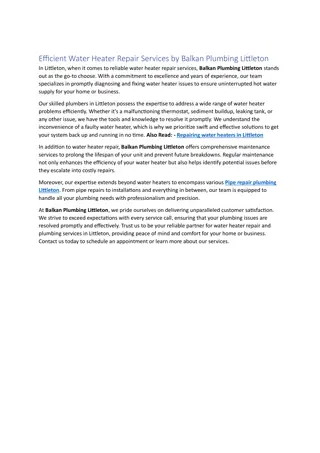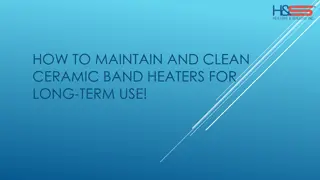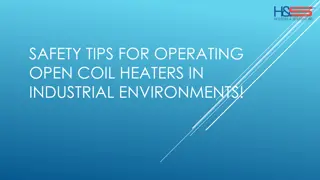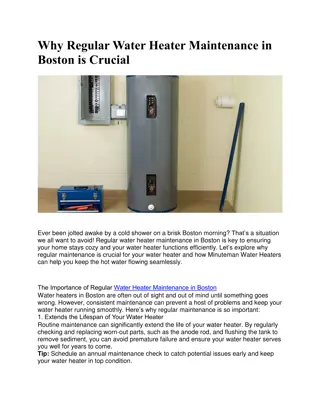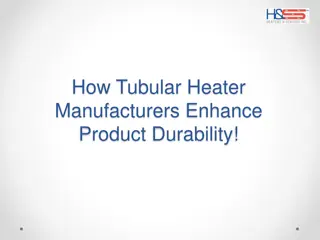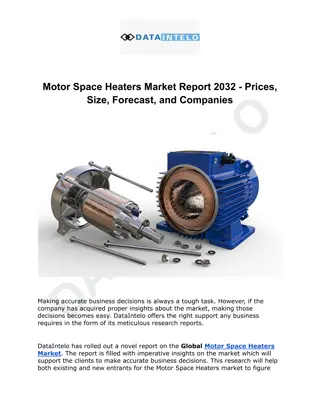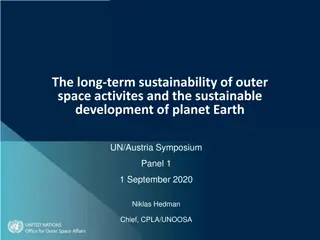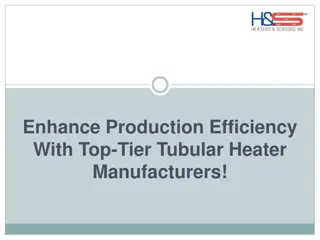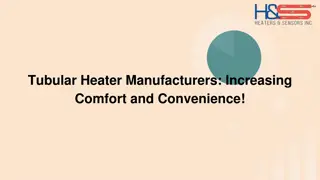SPACE HEATERS
The workings of space heaters, approved models, safety measures against carbon monoxide and fire risks, and proper use for effective heating. Learn about the importance of fuel, oxygen, and ignition sources in space heater operations. Stay informed to prevent hazards and ensure safety in heating environments.
Download Presentation

Please find below an Image/Link to download the presentation.
The content on the website is provided AS IS for your information and personal use only. It may not be sold, licensed, or shared on other websites without obtaining consent from the author.If you encounter any issues during the download, it is possible that the publisher has removed the file from their server.
You are allowed to download the files provided on this website for personal or commercial use, subject to the condition that they are used lawfully. All files are the property of their respective owners.
The content on the website is provided AS IS for your information and personal use only. It may not be sold, licensed, or shared on other websites without obtaining consent from the author.
E N D
Presentation Transcript
Use of Non-Approved space heaters is FORBIDDEN! 2
OUTLINE 1. Physiology of a Space Heater 2. What does approved mean? 3. Approved Space Heaters 4. Carbon Monoxide and Asphyxiation 5. Fire and Fuel Safety 6. PMCS 7. Questions from the field 8. Resources 3
Physiology of Space Heaters To fully understand the hazards of a space heater, we need to understand how it works. A military space heater uses burning fuel to produce heat for living and working spaces in a field environment. Fuel is introduced into a burn chamber along with fresh air, ignited, and the exhaust is vented away to the exterior of the space being occupied. 4
Physiology of Space Heaters As we remember from our 4th grade science class, to make fire, we require 3 things, Fuel Fuel, Oxygen, Ignition Source Oxygen Ignition Source 5
Physiology of Space Heaters Fuel 1. Oxygen and fuel enter the stove Oxygen 6
Physiology of Space Heaters Fuel 1. Oxygen and fuel enter the stove Oxygen Ignition Source 2. The mixture is ignited and the combustion products (exhaust) is vented away 7
Physiology of Space Heaters 3. Heat radiates and warms the area Fuel 1. Oxygen and fuel enter the stove Oxygen Ignition Source 2. The mixture is ignited and the combustion products (exhaust) is vented away 8
Physiology of Space Heaters 3. Heat radiates and warms the area be located outside of the shelter! The exhaust vent opening must also be higher then the shelter roof peak to ensure exhaust is drawn out. Fuel NOTE: The Fuel container as well as the exhaust vent opening must 1. Oxygen and fuel enter the stove Oxygen 2. The mixture is ignited and the exhaust is vented away 9
What does approved mean? 1. Un-vented heaters are not authorized for use by any unit in the USAREUR area of operation. 2. Vented commercial off-the-shelf (COTS) and electric heaters may be authorized if they are approved by a reputable national standards organization - Underwriters Laboratories (UL), American National Standards Institute (ANSI), International Standards Organization (ISO)) and are used outside tents and structures. 3. Any space heater belonging to the family of space heaters (FOSH). 10
Approved Space Heaters Family of Space Heaters (FOSH) Space Heater, Small SHS NSN: 4520-01-478-9207 Space Heater, Arctic SHA NSN: 4520-01-444-2375 Space Heater, Convective SHC NSN: 4520-01-431-8927 Space Heater, Radiant SHR, H-45 NSN: 4520-01-329-3451 11
Approved Space Heaters Space Heater Small (SHS) Capabilities: Provides heated air to safely and efficiently warm soldiers operating in basic, cold, and extreme cold environments. Provides new capability for heating smaller tents (4man or less). Description: SHS is a lightweight, portable, multi-fueled, non-powered heater intended to heat the 4 man Soldier Crew Tent. Provides a maximum heat output of 12K BTU with a high/low adjustment capability. Burns liquid (JP-8, JP-5, DF-1, DF-2, DF-A) fuels. Integral fuel tank eliminates the need for fuel can, fuel can stand, gravity feed adapter, hoses and fittings. Power requirements: None. Size: 16 L x 8.5 W X 14 H Weight: 20 lbs Cost: $400 (estimated) NSN: 4520-01-478-9207 12
Approved Space Heaters Space Heater Arctic (SHA) Capabilities: Provides heated air (radiant and natural convective) to safely and efficiently warm soldiers operating in basic, cold, and extreme cold environments. Replaces antiquated, gasoline burning M-50 Yukon Heater. Description: SHA is a lightweight, portable, multi-fueled, non-powered heater intended to heat five and ten man arctic tents. Provides a maximum heat output of 28K BTU with a high/low adjustment capability. Burns liquid (JP-8, JP-5, DF-1, DF-2, DF-A) and solid (coal & wood) fuels. Power requirements: None. Size: 17 L x 9 W X 17 H Weight: 41 lbs Cost: $735 NSN: 4520-01-444-2375 13
Approved Space Heaters Space Heater Convective (SHC) Capabilities: 35K BTU thermoelectric heater provides forced hot air circulation for shelters without the need for a field generator generates its own power and recharges batteries. Automatic start and temperature control Description: Delivers clean, breathable heat to e.g., Modular Command Post System, TOCs. Converts waste heat into electrical energy, which is used to power the blowers, pumps, ignition system, safety system, and control devices, and recharges its own starting battery Power requirements: None. Size: 40 x14 x18 ; 6.1 ft3 Weight: 74 lbs Cost: $6-8,000 (estimated) NSN: 4520-01-431-8927 14
Approved Space Heaters H-45, Space Heater Radiant, Large (SHR) Capabilities: Provides heated air to safely and efficiently warm soldiers operating in basic, cold, and extreme cold environments. Replaces antiquated M-41 heater that had severe operational and safety deficiencies. Description: H-45 space heater is a 45K BTU heater intended to heat the General Purpose and TEMPER tents. Operates without use of electrical power; burns liquid (JP-8, JP-5, JP-4, DF-1, DF-2, DF-A, gasoline) and solid (coal & wood) fuels. Power Requirements: None. Size: 18 Dia X 24 H Weight: 67 lbs Cost: $500 NSN: 4520-01-329-3451 15
Approved Space Heaters Thermal Electric Fan (TEF) Capabilities: Circulates heated air inside all military tents to improve habitability conditions and significantly reduce fuel usage by generating its own electrical power. Description: TEF is a silent, compact, rugged fan unit placed on top of any military tent heater. A built-in thermoelectric module converts heat from the top surface of heater into electricity to power the 450 CFM TEF. The TEF moves heated air around the tent to provide a more even heat distribution throughout the entire shelter. Power requirements: None. Size: 14 Dia; 10 H Weight: 12 lbs Cost: $500 NSN: 4520-01-457-2790 16
Carbon Monoxide and Asphyxiation Carbon Monoxide (known by the chemical symbol CO) is a colorless and practically odorless gas. It is poisonous to people and animals, because it displaces oxygen in the blood. It is produced by the incomplete burning of solid, liquid, and gaseous fuels. Appliances fueled with natural gas, liquefied petroleum (LP gas), oil, kerosene, coal, or wood may produce CO. Burning charcoal produces CO. Running cars produce CO. 17
Carbon Monoxide and Asphyxiation Normal oxygenation of the tetrameric (ie. 4 subunits) hemoglobin molecule. As it goes from (deoxy)hemoglobin to oxyhemoglobin the color changes from blue, as in venous blood, then to pink, as in arterial blood. Here carbon monoxide (CO) enters the picture, and through its very high affinity for hemoglobin, displaces the oxygen from the hemoglobin. This prevents oxygen being carried to the tissues and organs of the body. Carboxyhemoglobin is reddish in color. 18
Carbon Monoxide and Asphyxiation Oxygen is carried from the lungs by the blood hemoglobin to the tissues, here the beating heart is shown, and normal healthy oxidative metabolism goes on. During Carbon Monoxide poisoning, CO is carried from the lungs by the blood hemoglobin to the tissues, preventing oxygen from being carried, and blocking normal oxidative metabolism. Note how slowly and weakly the heart is beating, since it is starved for oxygen (i.e.. blue in color). 19
Carbon Monoxide and Asphyxiation All of these items Burn some type of fuel! 20
Carbon Monoxide and Asphyxiation The first symptom* of carbon monoxide poisoning is usually a tightness across the forehead, followed by headache and pounding of the heart. A positive sign* of progressive carbon monoxide poisoning is if the victim's face becomes extremely red. Weariness, dizziness, and mental changes may also occur. However, if the carbon monoxide is very concentrated, the victim may pass out without feeling any of these symptom. * A symptom is something YOU feel, a sign is something you SEE. 21
Carbon Monoxide and Asphyxiation The following is recommended for victims of carbon monoxide poisoning: Remove victim away from contaminated area into fresh air and loosen clothing. Give artificial respiration or CPR, as appropriate. If oxygen is available, give it to the victim by using a face mask. Seek medical attention immediately. Keep victim resting. 22
Carbon Monoxide and Asphyxiation If the victim was severely exposed to carbon monoxide, symptoms may occur days, or even weeks later, even if the victim at first appears to have fully recovered. Delayed symptoms include visual defects (blurry vision, or loss of sight), dizziness, profound changes in emotions and will power, as well as mental changes (depression). 23
Fire and Fuel Safety Do not use unauthorized fuels! Use of unauthorized fuel may result in fire/explosion! Tent exhaust opening closure flap must be rolled and tied securely. Tent may catch fire if hot stack assembly contacts the flap. Poorly fitted stack sections may allow the hot stack to fall on tent and start a fire, or deadly carbon monoxide to leak into tent. Ensure sections seat together fully. 24
Fire and Fuel Safety Heat or sparks from stack assembly could ignite fuel supply. Set up fuel supply on a clear site seven feet (approx. 2.5 meters) from tent and away from flame sources. If fuel flow control valve assembly is improperly positioned or if bracket is bent, a fuel overflow could occur inside burner shell and cause a fire or explosion. 25
Fire and Fuel Safety For safe operation, be sure to allow at least one (2) feet (61 cm) of space between the heater and the tent wall. Never relight a extinguished flame while the heater is hot. Be sure to allow the heater to cool completely before attempting to relight. Do not attempt to replenish the fuel supply while the heater is in operation. Be certain that there is no open flame in the vicinity of liquid fuel. 26
Fire and Fuel Safety When operating the heater in solid fuel mode (wood), a buildup of creosote can accumulate on the inside surface of the stack assembly that may result in a fire inside the stack. To prevent creosote buildup when operating with solid fuel, the stack assembly should be cleaned daily. Failure to do so may result in a fire causing severe injury or death. 27
Fire and Fuel Safety Gasoline, JP-4, Used Motor Oil, Solvents or other unauthorized fuels should NOT be used under any circumstance. Only approved liquid and solid fuels may be used. Using unauthorized fuels will create a fire danger and potential for explosion. 28
Fire and Fuel Safety Do not attempt to handle or perform services on a space heater that has recently been in operation. Let the space heater cool down before performing these procedures to avoid the possibility of serious burns. 29
Fire and Fuel Safety Severe injury may occur to personnel handling metal parts without protective gloves when temperatures are below freezing. Skin may freeze upon contact and tear from the flesh. Do not allow fuel to come in contact with bare skin. Even though fuel does not freeze, it is extremely cold and will burn exposed skin on contact. Wear protective gloves whenever handling or working with liquid fuel. 30
Preventive Maintenance Checks & Services As with all equipment, By-The-Book PMCS is necessary to maintain your space heater in a high state of safe and ready C-1 operational status. 31
Preventive Maintenance Checks & Services Any idea who this is? Before really does mean BEFORE! 32
Preventive Maintenance Checks & Services All metal heater components should be wiped down with a rag dampened with a light machine oil or WD-40 before storage or after cleaning to prevent rust. Proper cleaning is an integral part of maintenance. It will help prevent possible problems in the future, so make it a habit to clean your space heaters whenever necessary. The heater frame interior can be cleaned with a rag; the exterior can be cleaned with a brush. Wipe down all hoses with a rag. Make sure that all connectors are free of debris and that they work freely. 33
Questions from the field QUESTION: I have a 6 man crew tent (LIN T50975) and have been ordered to find a non Yukon heater to heat it....what is the right answer???? ANSWER: The Heater you need is Space Heater Artic NSN 4520-01-444-2375. 34
Questions from the field QUESTION: Trying to locate the TM number for space radiant heater NSN 4520-00-540-0557 ANSWER: The TM for space heater, NSN 4520-00-540- 0557 is TM 5-4520-235-13. This TM can be accessed at our ETM website. Since the TM is public release, the only thing required is the correct software. http://www.logsa.army.mil/ 35
Questions from the field QUESTION: What is the standard heater for the Army Crew tent???? ANSWER: For the Soldier Crew Tent you should use the Space Heater Small, NSN: 4520-01-478-9207. The dimensions are 16 L x 9 W x 14 H and its 32 lbs with 12,000 BTUH. The cost is $600 including all accessories. It is designed to provide heat for the Soldier Crew Tent (5-man tent) and other small tentage with floor area between 80 and 100 square feet. Operates without the use of electrical power and can burn all types of liquid fuel (DF-2, DF-1, DF- A, JP-5, JP-8). 36
Questions from the field QUESTION: we need the NSN for these kerosene heaters, Corona portable kerosene heater 23-dk. we have no other info on them, and our cg is demanding we get rid of these heater. ANSWER: Sir, we cannot identify the heater as described as above. Un-vented Kerosene heaters, as a general rule are not authorized for use. 37
Questions from the field QUESTION: I know it is common knowledge not to use metal fuel cans with our Heater, Space, Radiant, Large, tent stoves, but we are in a jam because we only have plastic cans. The plastic cans are not sealing right. My question is, can we use metal cans and if we can't, where can I get that in writing? ANSWER: TB 43-PS-539, page 49 says that as of 1 Oct 96 only plastic fuel cans are authorized according to United Nations and Department of Transportation rules. There are two 5-gal plastic cans available, sand colored NSN 7240-01-337-5268, and olive drab colored NSN 7240-01-337-5269. 38
Questions from the field QUESTION: Need info on Heater, Space NSN 4520-00- 927-4214. Is this heater safe to use. I know it has been replaced by a different stock number (3451). ANSWER: That NSN has been replaced by 4520-01- 329-3451. The old heater is very dangerous in use, the prime fuel to be used is MOGAS, it will run on JP8 but very poorly. The unit should turn them in and order NSN 4520-01-329-3451 the direct replacement as shown in FEDLOG. 39
Questions from the field QUESTION: My platoon sergeant told me I cold not operate my space heater until I completed the proper training, is this true? After all, it s just a heater! 40
Questions from the field Your platoon sergeant is one smart cookie! Every piece of equipment in the army inventory has the potential, if used without knowing the hazards, to kill or injure. ANSWER: Not only is it common sense, but training is required by regulation. AE Pam 385-15, section 35 assists commanders in implementing safety guidance for use and training of space heaters. 41
Resources http://www.logsa.army.mil/pub/psissues/PS_599.pdf PS Magazine It s your resource, Use It! 42
Look in these publications for more information AE Pam 385-15 Leader s Operational Accident Prevention Guide TM 10-4520-261-12&P Space Heater Arctic TM 10-4520-263-12&P Space Heater Small TM 9-4520-257-12&P Space Heater Radiant Large TM 10-4520-262-12&P Space Heater Convective 43
Resources For More Information Contact your Unit Safety Officer/NCO 44
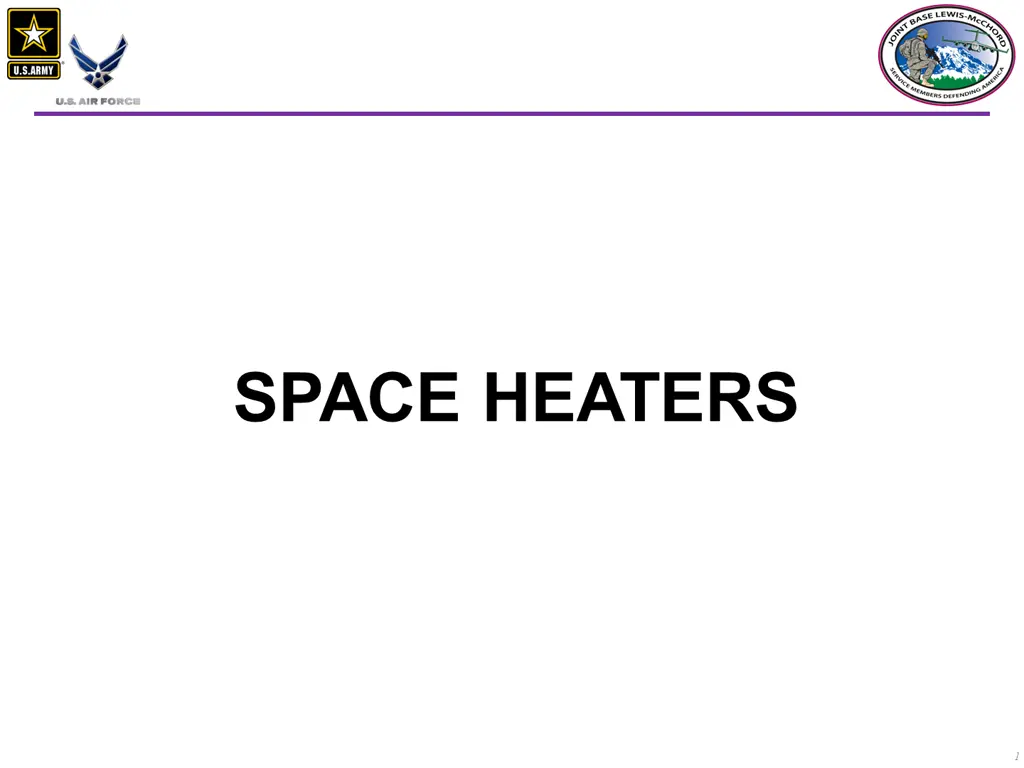

![Read⚡ebook✔[PDF] Linking the Space Shuttle and Space Stations: Early Docking Te](/thumb/21519/read-ebook-pdf-linking-the-space-shuttle-and-space-stations-early-docking-te.jpg)
![READ⚡[PDF]✔ Emerging Space Powers: The New Space Programs of Asia, the Middle Ea](/thumb/21554/read-pdf-emerging-space-powers-the-new-space-programs-of-asia-the-middle-ea.jpg)

